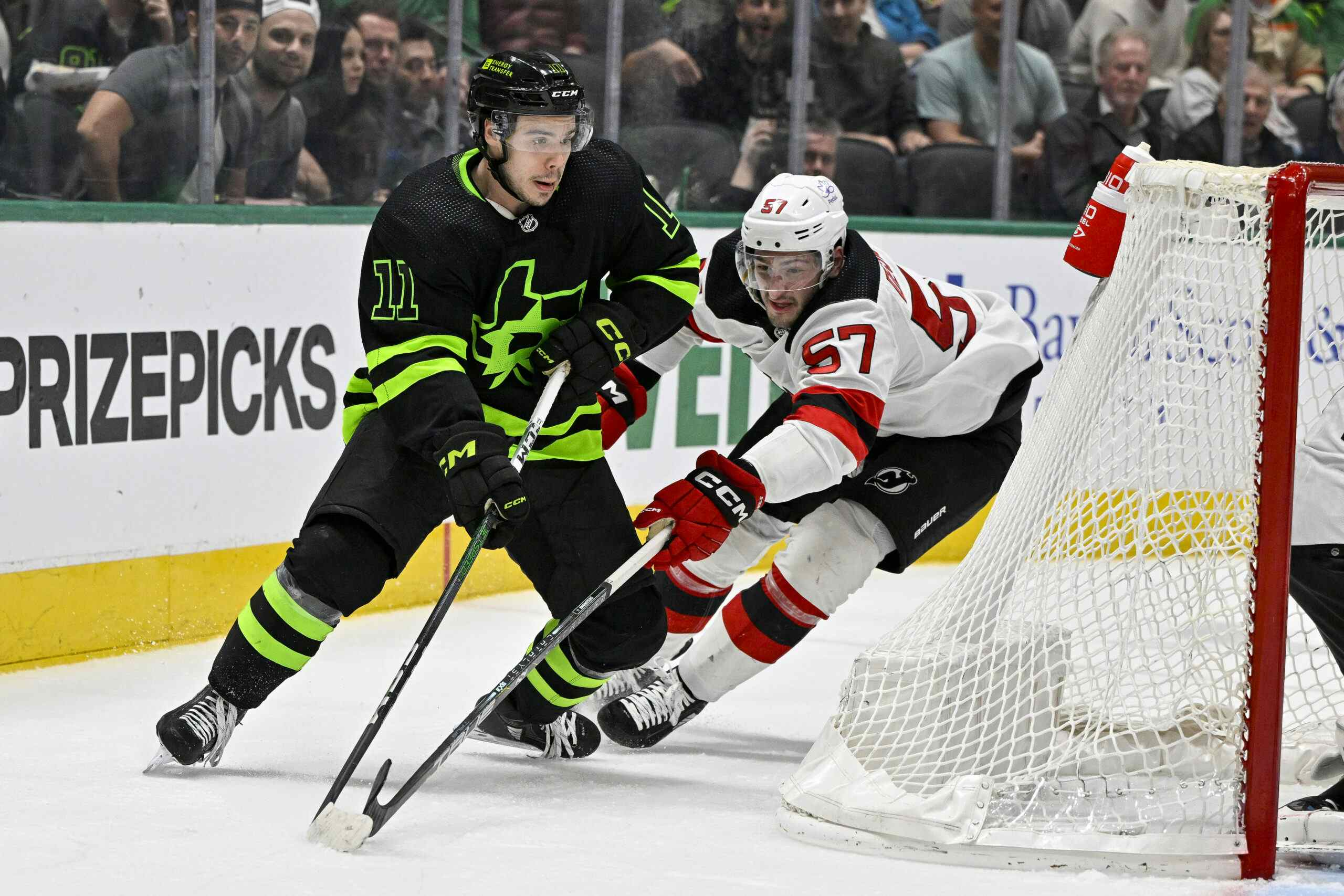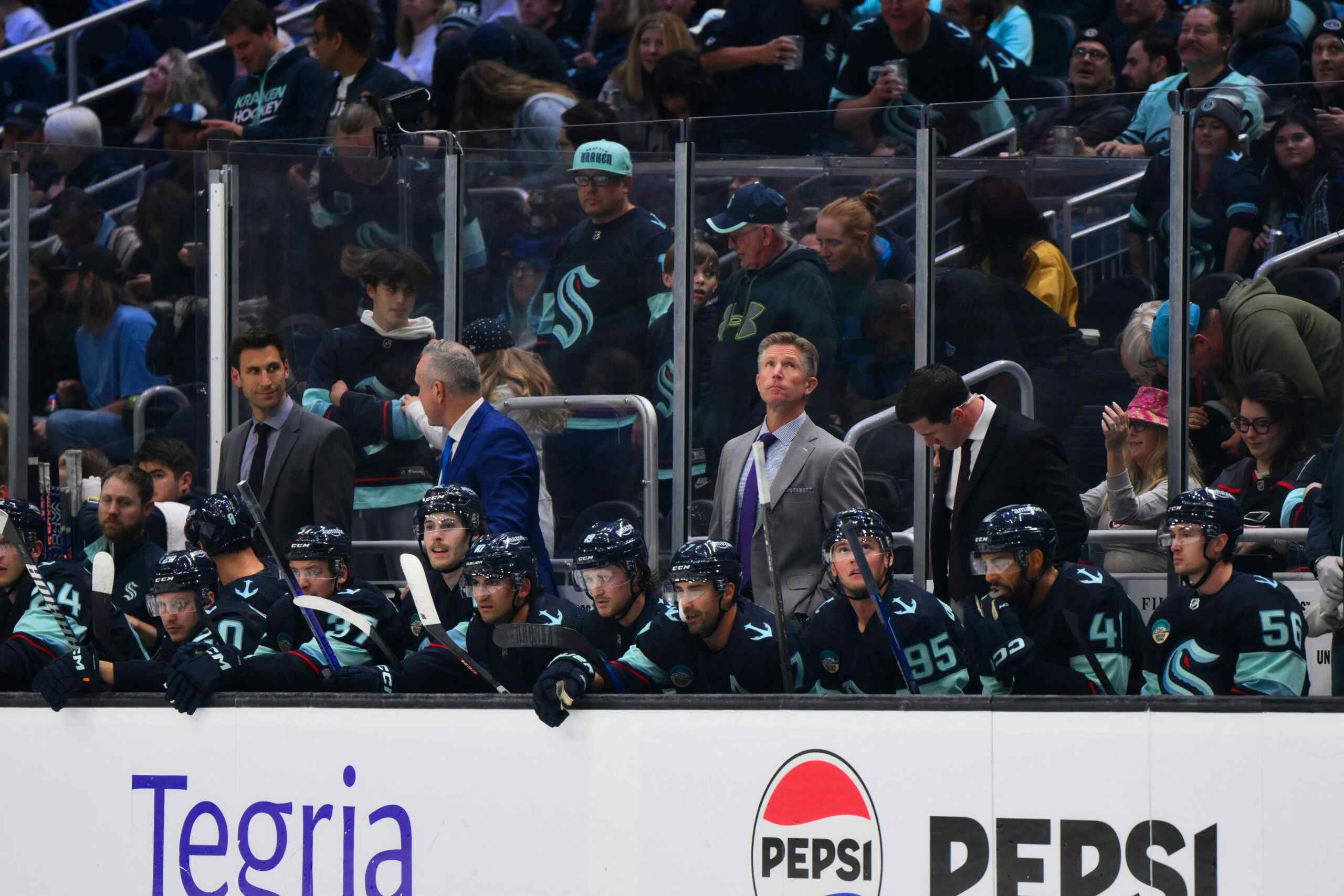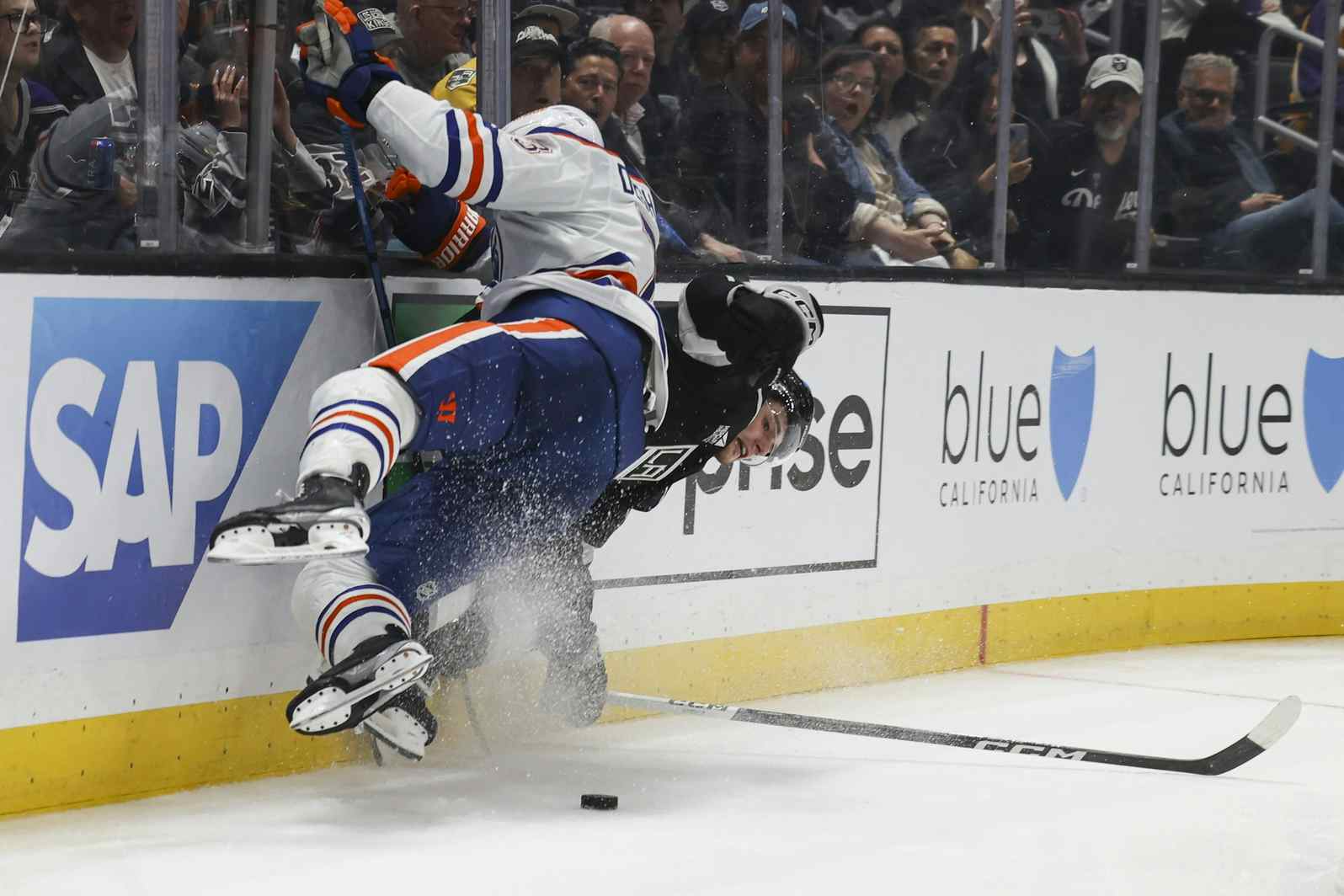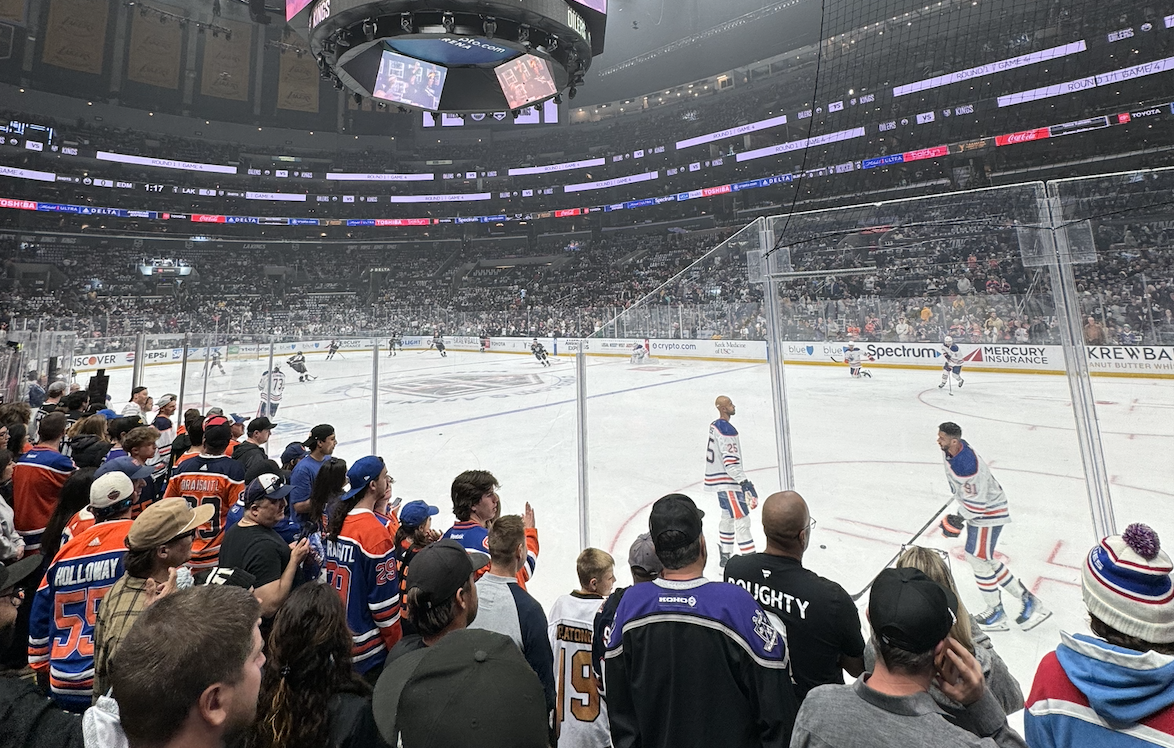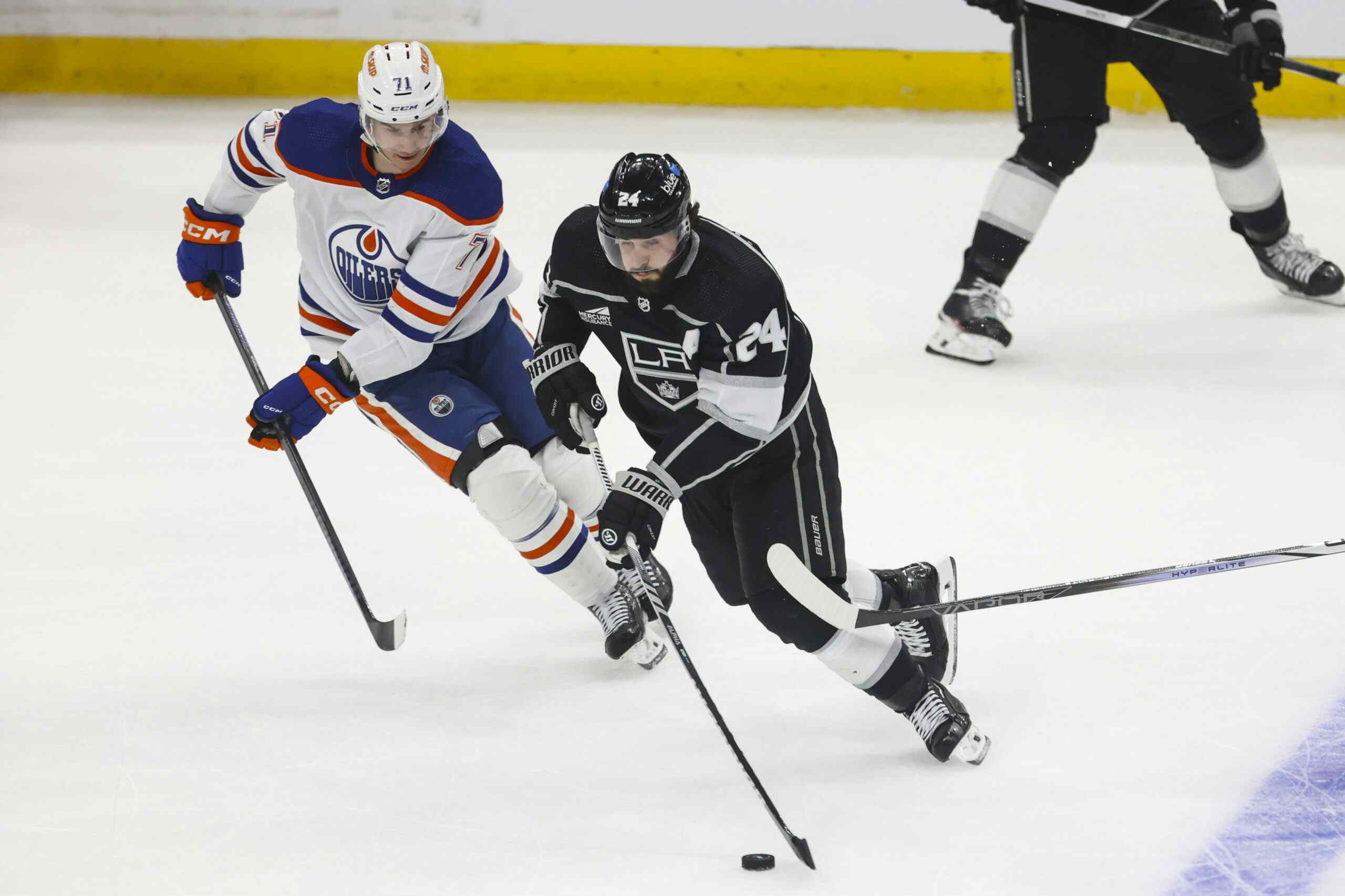Power Play Changes for the Oilers
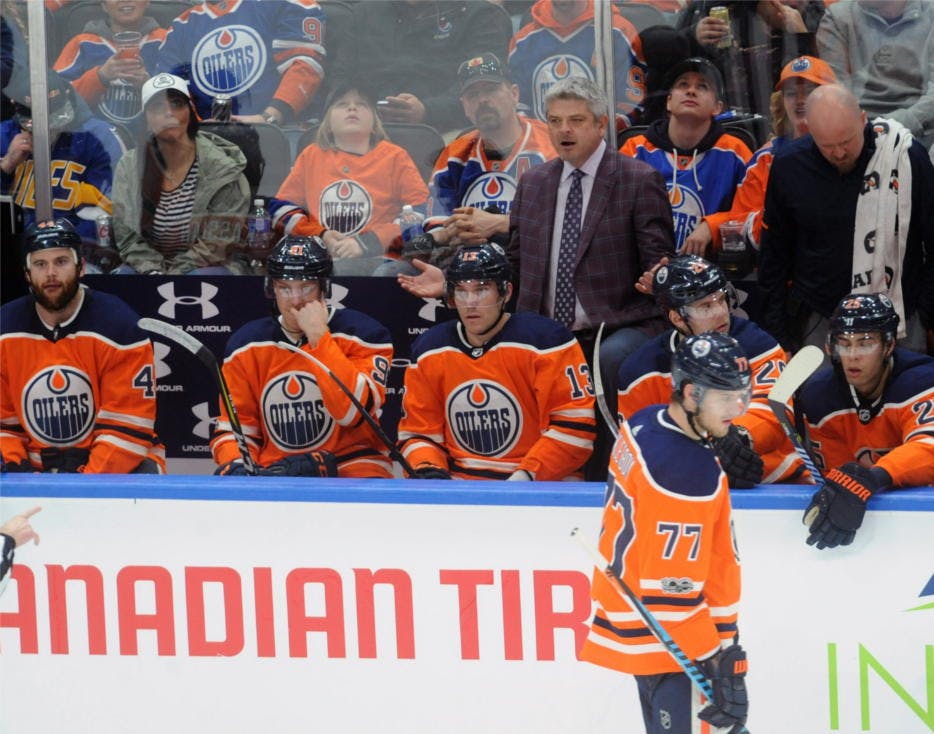
By Jason Gregor
5 years agoThis past season the Edmonton Oilers had the NHL’s worst powerplay, 14.8%, despite deploying the league’s leading scorer, Connor McDavid, on 67% of their powerplay minutes. What went wrong?
The Oilers had many challenges this year, but today we will focus on the powerplay. It was fifth best in the NHL in 2017 at 22.9%, with McDavid, Leon Draisaitl, Milan Lucic, Oscar Klefbom and Mark Letestu as the top unit for the final 62 games. Their PP success was the opposite in 2016/2017 compared to last year.
In their first 20 games of 2016/2017, they were 17.5%, scoring 10 goals on 57 chances. In their final 62 games, they were 24.5% with 46 goals on 188 opportunities.
This year after 20 games, they were 21.4% (12 of 56), but in their final 62 games they dipped to 12.3% with 19 goals on 154 powerplay chances.
In 2016/2017, they switched Mark Letestu in for Jordan Eberle on the top unit, and cut back Ryan Nugent-Hopkins PP minutes, and the powerplay took off.
The Letestu switch worked really well, which proves you don’t always have to use your five best players on the PP to have success. Letestu is a very smart player, and possesses a very good one-timer as a right-handed shot. Eberle, who has had very good PP success in his career, didn’t use a one-timer and the change really helped the Oilers.
Here is how the ice time and points in the first 20 games of 2016/2017.
Player G PTS PP MIN
McDavid 0 6 59
Draisaitl 4 5 51
Lucic 2 4 56
Eberle 1 4 58
Klefbom 0 2 50
RNH 2 2 43
Puljujarvi 1 1 19
Sekera 0 1 34
Maroon 0 1 40
Benning 0 1 9
Letestu 0 0 15
Caggiula 0 0 3
McDavid 0 6 59
Draisaitl 4 5 51
Lucic 2 4 56
Eberle 1 4 58
Klefbom 0 2 50
RNH 2 2 43
Puljujarvi 1 1 19
Sekera 0 1 34
Maroon 0 1 40
Benning 0 1 9
Letestu 0 0 15
Caggiula 0 0 3
The first unit wasn’t terrible by any stretch, as the Oilers were 17.5% in the first 20 games, but the coaching staff switched Letestu onto the top unit, and started to play Draisaitl and McDavid almost exclusively together. It worked very well over the final 62 games.
Player G PTS PP MIN
McDavid 3 21 189
Draisaitl 6 22 187
Lucic 10 21 167
Letestu 11 14 159
Klefbom 3 14 156
Sekera 1 10 141
Eberle 3 10 125
RNH 3 9 111
Maroon 3 5 115
Caggiula 2 5 95
Benning 1 2 16
Pouliot 0 0 25
McDavid 3 21 189
Draisaitl 6 22 187
Lucic 10 21 167
Letestu 11 14 159
Klefbom 3 14 156
Sekera 1 10 141
Eberle 3 10 125
RNH 3 9 111
Maroon 3 5 115
Caggiula 2 5 95
Benning 1 2 16
Pouliot 0 0 25
The Oilers PP was excellent for the final 62 games, clicking at 24.5%. The first unit was very good, but the second unit also chipped in. Letestu was very productive, scoring 11 goals, and won more faceoffs. Lucic had the best powerplay stretch of his career. Draisaitl, in the bumper spot, was excellent because of his elite passing skills on both forehand and backhand. It was interesting to note, albeit in a very small sample size, that Matt Benning produced a lot of points in limited minutes. In 25 PP minutes he picked up four points. I believe he has more PP potential than most people think, because he is very good at getting pucks through from the point.
THIS SEASON

Apr 7, 2018; Edmonton, Alberta, CAN; The Edmonton Oilers celebrate a first period goal by forward Leon Draisaitl (29) against the Vancouver Canucks at Rogers Place. Mandatory Credit: Perry Nelson-USA TODAY Sports
After such a strong finish in 2017, it wasn’t surprising that they went with the same five on the first unit to start this year. The PP started strong, producing 12 goals in the first 20 games (21.4%), but then it hit the ditch, and stayed there for the rest of the season.
Production through the first 20 games of 2017/2018.
Player G PTS PP MIN
McDavid 3 7 62
Letestu 3 5 57
RNH 3 4 35
Strome 2 3 35
Caggiula 1 1 18
Maroon 0 3 40
Lucic 0 2 49
Klefbom 0 2 63
Russell 0 2 16
Benning 0 1 18
Draisaitl 0 0 42
McDavid 3 7 62
Letestu 3 5 57
RNH 3 4 35
Strome 2 3 35
Caggiula 1 1 18
Maroon 0 3 40
Lucic 0 2 49
Klefbom 0 2 63
Russell 0 2 16
Benning 0 1 18
Draisaitl 0 0 42
It is amazing the Oilers were 21.4% with Draisaitl producing zero points. It was only 20 games, but the PP then started to falter and much of it was due to them eliminating Draisaitl in the middle. The Oilers didn’t do a great job of adapting to teams taking away the high-tip from Draisaitl. The Oilers then moved Draisaitl to the right point, and often he’d be very far away from the play. I’d put some of that on the system, but also on Draisaitl, as he clearly looked frustrated with his new position. Lucic and Draisailt combined for two points in 20 games, after finishing last season with 43 points over the final 62 games.
The Oilers powerplay struggled from November on, but we didn’t see them make many changes until January when Letestu was taken off the top unit. The PP continued to struggle, for the most part, other than getting hot for a few games here and there.
Here is their production over the final 62 games.
Player G PTS PP MIN
McDavid 2 13 180
Draisaitl 6 11 178
Lucic 3 5 125
RNH 1 5 85
Klefbom 1 4 118
Strome 0 3 123
Caggiula 2 2 47
Puljujarvi 2 2 47
Bear 1 2 32
Cammalleri 1 2 48
Sekera 0 2 35
Letestu 0 1 79
Benning 0 1 47
Maroon 0 0 59
McDavid 2 13 180
Draisaitl 6 11 178
Lucic 3 5 125
RNH 1 5 85
Klefbom 1 4 118
Strome 0 3 123
Caggiula 2 2 47
Puljujarvi 2 2 47
Bear 1 2 32
Cammalleri 1 2 48
Sekera 0 2 35
Letestu 0 1 79
Benning 0 1 47
Maroon 0 0 59
The PP struggled at 12.3% with only 19 goals in 154 chances. It did improve in the final 20 games of the season, scoring nine times, but from November 19th to February 26th, the PP was a brutal 9.8% with 10 goals on 102 chances. A few things I noticed: I wouldn’t have Ryan Strome on the first unit. It didn’t work. He didn’t have a goal in 123 minutes, and many of those minutes were on the top unit.
Many keep mentioning the Oilers need a big shot from the point, but I don’t agree. It is a nice bonus, but in 2017 when the Oilers PP was 22.9%, Oscar Klefbom, who has a very good shot, had only 31 PP shots in 206 PP minutes. This past year, in 182 minutes, he had 51 shots. He had almost twice as many shots, but the PP was far less successful. Yes, his shoulder was bugging him, but not enough to stop him from shooting.
Klefbom was tied for 12th in PP shots among D-men.
Shayne Gostisbehere had 86 in 281 minutes. He had 7-26-33. Flyers PP was 15th.
Drew Doughty had 74 in 258 min with 3-17-20. Kings PP was 18th.
Brent Burns had 71 in 301 min with 5-22-27. Sharks PP was 16th.
Roman Josi had 71 in 215 min with 7-13-20. Preds PP was 14th.
John Carlson had 62 in 303 min with 4-28-32. Capitals PP was 7th.
PK Subban had 56 in 261 min with 5-20-25. Preds PP was 14th.
Torey Krug had 56 in 261 min with 5-19-24. Bruins PP was 4th.
Justin Faulk had 56 in 222 min with 3-16-19. Hurricanes PP was 22nd.
Keith Yandle had 56 in 271 min with 1-17-18. Panthers PP was 21st.
Dougie Hamilton had 56 in 218 min with 6-6-12. Flames PP was 29th.
Colin Miller had 54 in 201 min with 5-12-17. Golden Knights PP was 9th.
John Klingberg had 51 in 299 min with 1-22-12. Stars PP was 19th.
Alex Pietrangelo had 51 in 235 min with 3-10-13. Blues PP was 30th
Mark Giordano had 51 in 257 min with 1-9-10. Flames PP was 29th.
Klefbom had 51 in 182 min with 1-5-6. Oilers PP was 31st.
Drew Doughty had 74 in 258 min with 3-17-20. Kings PP was 18th.
Brent Burns had 71 in 301 min with 5-22-27. Sharks PP was 16th.
Roman Josi had 71 in 215 min with 7-13-20. Preds PP was 14th.
John Carlson had 62 in 303 min with 4-28-32. Capitals PP was 7th.
PK Subban had 56 in 261 min with 5-20-25. Preds PP was 14th.
Torey Krug had 56 in 261 min with 5-19-24. Bruins PP was 4th.
Justin Faulk had 56 in 222 min with 3-16-19. Hurricanes PP was 22nd.
Keith Yandle had 56 in 271 min with 1-17-18. Panthers PP was 21st.
Dougie Hamilton had 56 in 218 min with 6-6-12. Flames PP was 29th.
Colin Miller had 54 in 201 min with 5-12-17. Golden Knights PP was 9th.
John Klingberg had 51 in 299 min with 1-22-12. Stars PP was 19th.
Alex Pietrangelo had 51 in 235 min with 3-10-13. Blues PP was 30th
Mark Giordano had 51 in 257 min with 1-9-10. Flames PP was 29th.
Klefbom had 51 in 182 min with 1-5-6. Oilers PP was 31st.
Out of these 15 players, only three of their teams were top-13 in PP efficiency. Pittsburgh had the best PP in the league and three of their forwards were all top 20 in the NHL in PP shots, with Evgeni Malkin (74 shots), Patrik Hornqvist (71) and Phil Kessel (68). Sidney Crosby was fourth on the Pens in shots with 56 while Kris Letang was fifth with 33.
Toronto had the second best PP and their top-seven shooters were all forwards. Morgan Reilly was eighth with 26 shots, but he led the Leafs in PP assists with 24.
Tampa Bay had the third best PP and Nikita Kucherov and Steven Stamkos had 82 and 72 shots respectively. Brayden Point and Alex Killhorn had 36 and 33. Viktor Hedman had 48 shots, but he had 24 assists and two goals. All three of the NHL’s top powerplays focused on shots from their forwards, closer to the net.
Klefbom led the Oilers with 51 shots followed by Draisaitl (42), McDavid (36), Strome (29), RNH (26) and Lucic (23). Much of the Oilers issue this year was that they relied on too many point shots.
In 2016/2017, the Oilers shots leaders on the PP were Draisaitl (52), Lucic (49), Letestu (43), Eberle (37), McDavid (35), then Sekera and Klefbom.
The Oilers coaching staff, as I reported yesterday, which now includes Trent Yawney and Glen Gulutzan, need to ensure their PP format for the upcoming season involves the majority of shots coming from their forwards. The talk about a need for a big-shot, right-shot D-man on the PP are overblown. The elite ones are extremely rare to find, and even if you have one, it won’t lead to more PP success if they are shooting a lot. You want a great passer on the blueline, with the threat of a shot.
MCDAVID FACTOR

Apr 5, 2018; Edmonton, Alberta, CAN; Vegas Golden Knights goaltender Malcom Subban (30) makes a save on Edmonton Oilers forward Connor McDavid (97) during the third period at Rogers Place. Mandatory Credit: Perry Nelson-USA TODAY Sports
We saw McDavid shoot the puck much in the second half of last year, and it resulted in him becoming a major goal-scoring threat. Despite consecutive Art Ross Trophies, McDavid is still developing and finding different ways to dominate.
His season split is pretty telling.
First 41 games: 14-32-46 with 117 shots.
Final 41 games: 27-35-62 with 157 shots.
Final 41 games: 27-35-62 with 157 shots.
Health played a factor, as he lost 15 pounds in November and never regained his full strength until January, but he started shooting the puck more and he became much more dangerous. His assist totals are virtually the same, and if you look at his splits from 2017 when he scored 100 points, his shots/game were basically the same as the first half of this year.
First 41 games: 14-32-46 with 123 shots.
Final 41 games: 16-38-54 with 128 shots.
Final 41 games: 16-38-54 with 128 shots.
There is no debating he started shooting more, but it came mainly at 5×5, not on the PP. In 2017 he had 35 shots in 249 PP minutes, and this year he had 36 shots in 243 minutes.
McDavid is the most dangerous offensive player in the NHL at even strength, and the scary part for the rest of the NHL is he has yet to find his groove on the powerplay. Coaching and the system will be a factor next year, but don’t be surprised to see McDavid work at improving his play on the man advantage.
LEARNING TO PLAY SLOWER
McDavid’s speed, both his hands and feet, are his biggest weapon. He is so much faster than the rest of the league, but the powerplay isn’t about speed, other than zone entries, which the Oilers were quite good at last year.
Prior to the start of the playoffs, I spoke to another player who, up until this season, had been much more productive at 5×5 than on the powerplay. Taylor Hall picked up 37 PP points. He only had more than 17 PP points once prior to this year, 21 in 2012. And over the past three years he combined for 33 PP points. He took a massive jump this year.
Hall had the fifth most PP points in the NHL behind Kessel (42), Blake Wheeler (40) Malkin and Crosby (38). The Penguins PP was go dangerous and had three of the league’s top-four PP scorers, but if you compare PP points to minutes, Hall was ahead of all three Penguins. Kessel had 42 points in 309 minutes, Crosby had 38 in 299 min while Malkin had 38 in 286 minutes. Hall produced 37 points in 221 minutes.
In the summer of 2017, Hall said, “I need to become a better power play player.”
In April I asked him, “What did you do to become a better power play player?”
“That’s a great question. If you look at my career, and as a player you always try to nitpick yourself, I’ve always been able to play pretty well and produce five-on-five, but the powerplay just seemed to be a bit of a foreign space to me. There’s so much open ice on the power play and everything slows down a bit, and I tended to be a player who would try and force plays five-on-four and play a little bit quicker than I needed to. I got some really good coaching in Jersey last year. Jeff Ward is our power play coach and we had some pretty good dialogue through the last couple of years. He put me on a spot in the power play this year that I’ve never really played before. I played my forehand side on the half wall and it seemed to be a spot that was pretty similar to where I spend my time, five-on-five, and it kind of jelled from there pretty quickly. I’d say an there was some adjustments from myself, but I got to tip my hat to the coaches here, a lot of special team stuff can be the assistant coaches and they did a great job here.”
So did you learn to be a better “slower” player, I asked.
“Yeah, that’s absolutely what it is,” said Hall. “It’s being a better slower player, it’s being able to make plays standing still. At five-on-five it (standing still) doesn’t happen too often. There are some guys, usually the bigger, stronger players, they’re better at making plays when it’s a bit slower, but for myself I was more used to playing with quick linemates and scoring goals off of the rush. The biggest thing was I just stopped trying to force plays, stopped trying to make that cross ice, soft pass on the back door and tried to focus on getting as many shots and chances in front of the net on the power play. For most of the year we had a really good solid unit on the power play and it helped our team,” said Hall.
Don’t be surprised to see McDavid show similar growth in his powerplay game this coming season. The coaches need to get back to a system that promotes shots from the forwards over defence, but much of the Oilers PP success will flow through McDavid and Draisaitl. Draisaitl likes to slow the game down, even at 5×5, and he has led the Oilers in PP goals the past two years, despite a horrible start this year, but McDavid’s potential to improve on the man advantage is huge, and I believe that will be the biggest factor why the Oilers powerplay will be in the top-ten again next season.
Keep in mind, from 2017 to 2018, only two NHL teams had a double digit drop in PP goals. Twenty teams had more PP goals in 2018 than they did in 2017, one was even, and nine were minus (Vegas not included). The Oilers had the worst drop, by far, scoring 25 fewer powerplay goals. St.Louis was the other double digit dip with 12 fewer goals, and not surprisingly Edmonton also had the worst drop in efficiency, -8.1%, from 22.9% down to 14.8%.
Colorado scored 35 more PP goals in 2018 than they did in 2017, and they jumped from 12.6% to 21.9%. The New York Islanders improved by 8.3% (23 more goals) and the Vancouver Canucks improved by 7.3% (21 goals), so it is very realistic the Oilers could also make big gains with their PP next season.
ULTIMATE SPORTS FAN

My eighth annual Ultimate Sports Fan package in support of charity is here again. On June 9th and 10th, I am riding in the 190km MS Bike Tour, and I’ve come up with a pretty good package for the diehard sports fan.
Here’s how it works: You make a $125 donation and you get one entry. If you make a $250 donation you get two entries, and so on.
We only take 100 entries and we will raise $12,500 for MS. The draw will be the week of June 5th.
This year’s winner will win the following prizes and more.: The final package is valued at over $6,000.00
- The “Oilers experience” at the Oilers home opener in October, which includes tickets, parking, dinner and a behind the scenes tour.
- A pair of Edmonton Eskimos season tickets in the lower bowl.
- A game used Ryan Nugent-Hopkins stick.
- A signed Mike Reilly Eskimos jersey (you pick the size) courtesy of The Sports Closet.
- Twenty tickets, and a hot dog and beverage (non-alcoholic), to an Oil Kings home game. Also, you will get an Oil King player of your choice to come to your backyard rink or minor hockey practice for an hour. (Between November 1st and December 15th.)
- Ten tickets to the Rugby match Canada v. Scotland on Saturday, June 9th at Commonwealth presented by MB Events.
- A signed Matt Barzal jersey
- $500 GC at Match Eatery and Public House (either location).
Keep in mind this sold out in ten days last year, so if you want a chance to win and help end MS get in the draw today.
You can make your donation here. (click Donate Now to the right of my picture).
Thank you and good luck.
Recently by Jason Gregor:
Recent articles from Jason Gregor

